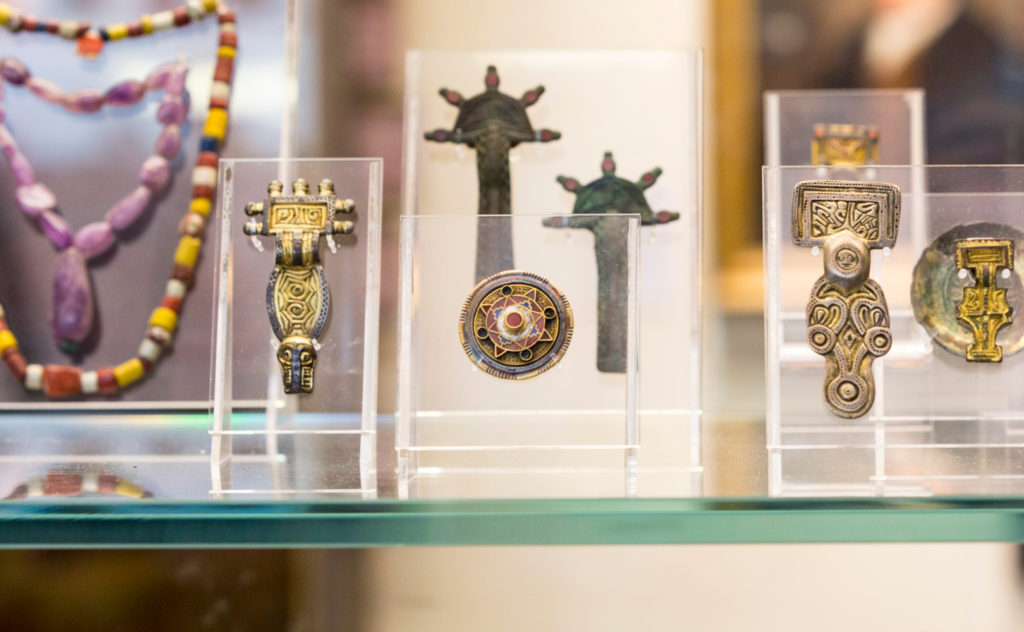
Women in the Anglo Saxon Kingdom of Kent
A blog investigating women in the Anglo Saxon Kingdom of Kent through two artefacts in the...
This week Craig has been carrying… Iron Age Pottery
Dating from 50 – 100 AD this assemblage of handmade pottery is known as Beligium grog tempered ware. It is so-called because the clay was mixed with small pieces of detritus such as pottery, flint and shell, known as ‘grog’.
This type of earthenware was first produced before the Roman invasion of AD. 43 and continued in use for a hundred years or so afterwards. Made by the Belgae people who had fled from France to Britain after the Romans invaded, the pots have distinctively Belgic patterns. Vessels such as these were widely distributed in southern England, especially in Kent.
Belgic Grog tempered ware jar with grooves above the shoulder. Unearthed at Sturry Hill, Canterbury (left)
Belgic grog tempered ware flask.
Belgic carinated cup excavated in an archaeological dig at Whitehall road in the 1950’s.